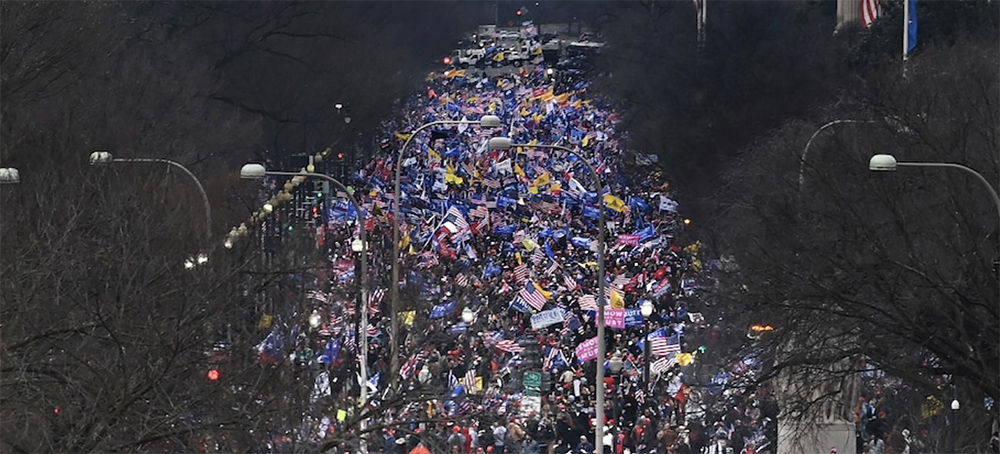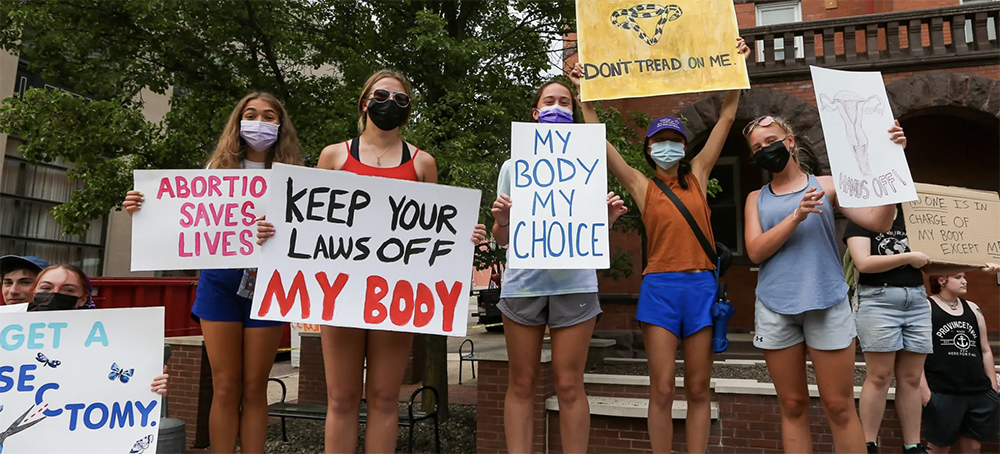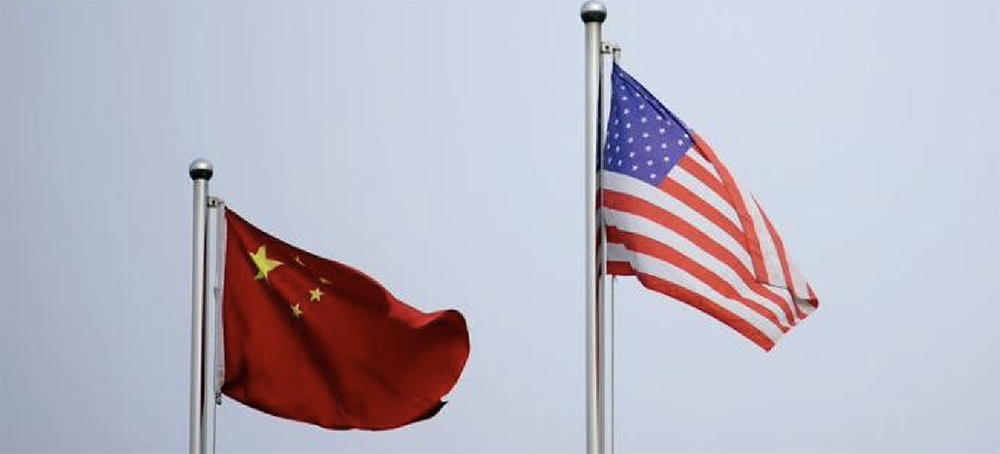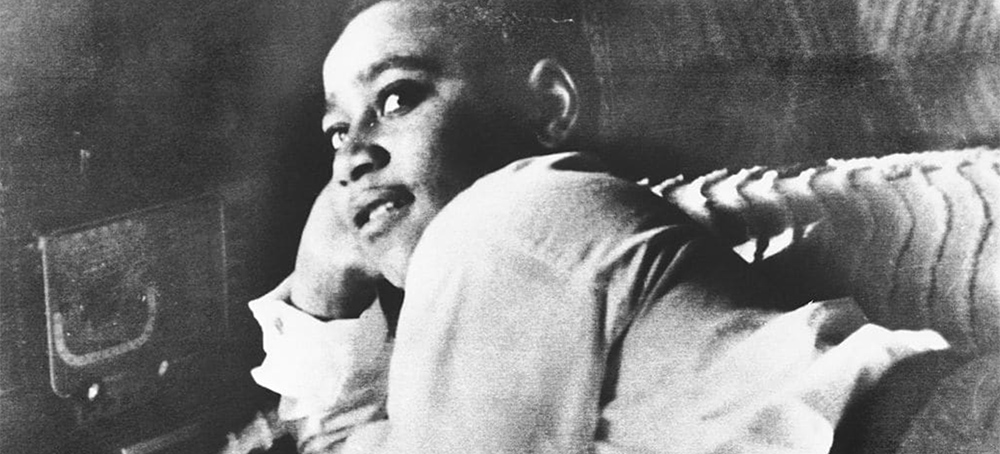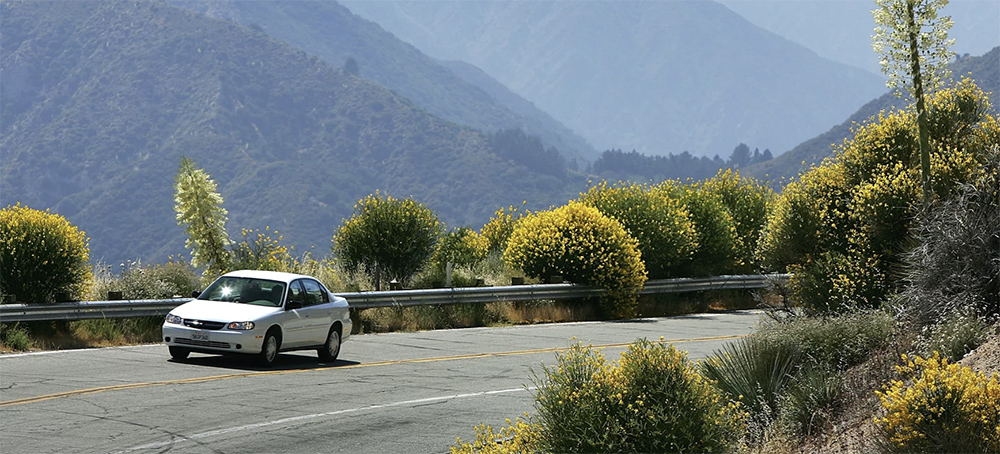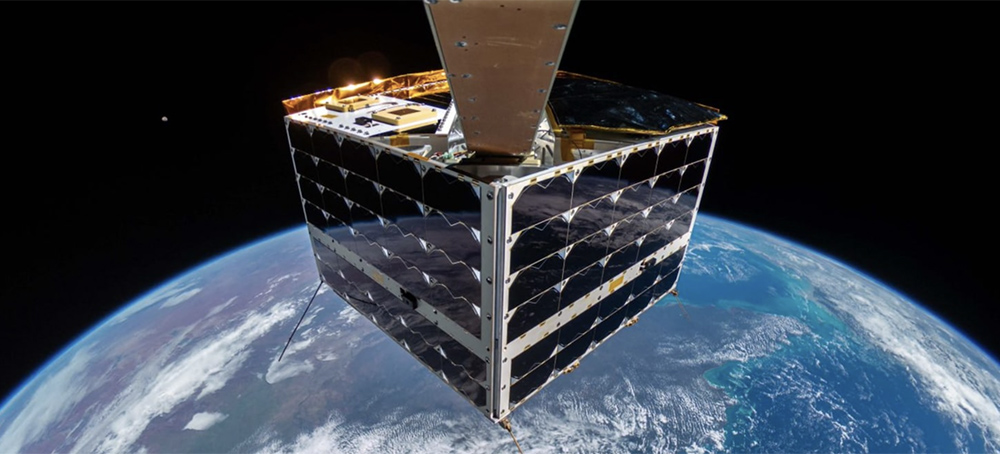Live on the homepage now!
Reader Supported News
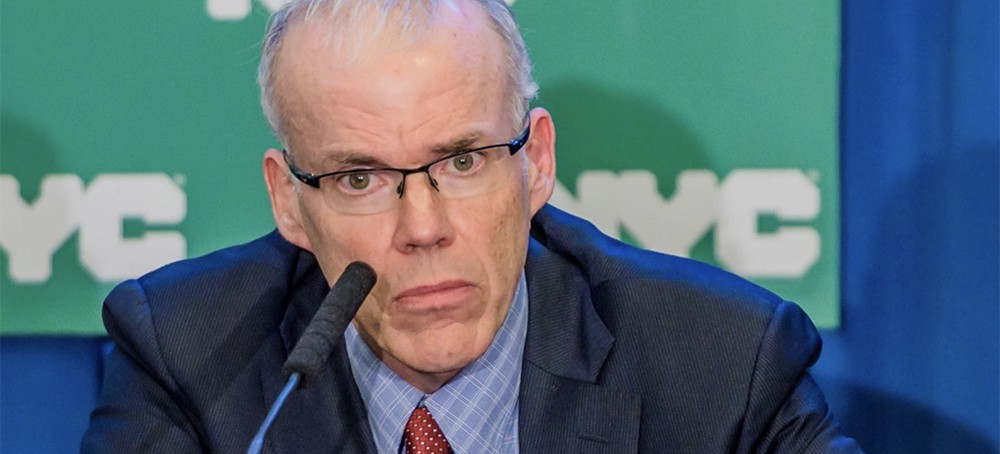
FOCUS: Bill McKibben | Be the Backlash!
Bill McKibben, Bill McKibben's Substack
McKibben writes: "A reasonable reaction to the week's Supreme Court rulings, which culminated in Thursday’s gutting of the Clean Air Act, would be: we are so screwed. But there’s another way to look it."
The Supreme Court's decisions are insanely unpopular; we have to make that matter
But there’s another way to look it: we can turn the right-wing’s wet dream into a nightmare for them if we fight back. If we seize it, we have the best opportunity in many years for reconfiguring American politics
The key thing to understand about these Supreme Court decisions is that they’re fantastically unpopular. On guns, on choice, and on climate the Court has taken us places Americans badly do not want to go. By majorities of two-thirds or more Americans detest these opinions; those are majorities large enough to win elections and to shape policy, even in our corroded democracy. The right, after decades of slow and careful and patient nibbling away at rights and norms is suddenly rushing full-tilt. That’s dangerous for us, but also for them. The force of that charge can, jiu jitsu-like, be turned against them.
To understand the possibilities, consider the Clean Air Act itself. It was signed into law in 1970 by Richard Nixon—a few months after the first Earth Day brought 20 million Americans into the streets, energy that carried over into the midterm elections. The Earth Day organizers targeted a ‘dirty dozen’ congressmen—and beat seven of them. Their political clout established, they were able to force Richard Nixon to sign all the most important environmental legislation in American history, even though Nixon cared not at all about the natural world. (Environmentalists were people “who wanted to go live like a bunch of damned animals,” he explained to the chairman of the Ford Motor company in an Oval Office meeting that he helpfully taped).
That first Earth Day was an organizable moment because the Cuyahoga River was on fire. Now the whole world is on fire. But, as David Wallace-Wells recently pointed out, we’ve been a little lulled and confused by the endless greenwashing and promises of our various corporate and government masters—the Larry Finks of the world.
The Court has done us a supreme favor by ripping away the veil. It is entirely clear that if we want to defend the planet (or a woman’s right to choose, or the right to a world where everyone isn’t packing a pistol), we’re going to have to fight. Their naked grab for power is succeeding—but it could still backfire if we set out minds to it.
What would that look like? In the short political term, a promise from every Democrat that they would overturn the filibuster and expand the Court if elected. We can’t get rid of every archaic part of our governmental structure, but the Constitution doesn’t get in the way of these changes. And they would liberate majorities to actually write policy and not see it struck down by the partisans that currently inhabit the bench,
As I suggested last week that it would be easiest if this fight was led by Joe Biden, perhaps on a train. Biden did, yesterday, say that he favored a “filibuster carve-out” to codify Roe into law, but saying it is not the same as campaigning for it. (Also, could he maybe figure out a less convoluted way of saying it). I confess: I suspect that Biden lacks the fire to lead this fight. He has done a creditable job of restoring some kind of normalcy to America after Ketchup Boy’s reign, but that’s a different task than really leading a crusade.
So we have to do it ourselves. The political commentator Josh Marshall has been using his website to try and get Senate candidates on the record about the filibuster; people should join that and similar efforts (July 4th recess is coming up, and with it town halls for politicians) and when candidates speak straightforwardly, we should rally behind them. The polling data shows a significant shift away from the GOP in the wake of the Roe ruling; our job is to make sure that continues, instead of fading away as we focus once more on inflation. Because the conventional wisdom a week ago was that the Democrats were going to get routed in the fall. If that doesn’t happen—and if the reason is that the GOP badly overreached—then there’s actually some chance of the Republicans recalibrating a tad and the Democrats finding a soul. Obviously it won’t be easy—all of the structural problems of our democracy are in the way. We have to fight for our lives while Wyoming and California each have two Senate seats and Citizens United is the law of the land. But it’s not impossible: our majorities on these issues are large enough to overwhelm even these archaic structures. Seventy percent is enough.
And if we somehow do get 52 seats in the Senate and hold the House? Then we need to make sure they actually do what we need them to. That time when Sunrise staged a sit-in at Nancy Pelosi’s office? That was a good idea; Democratic leaders seem constantly sleepy, in need of a loud buzzer going off at intervals to wake them from their stupor. As Naomi Klein wrote of the Democrats yesterday, “if they decide to run with it, everybody on this planet wins. If they refuse, they deserve every loss coming their way.”
But the backlash can’t just be aimed at Washington. It has to go at Wall Street too. It’s the billionaires and the Chamber of Commerce and the banks and the oil companies that have funded this endless rightwing tilt, coming together time after time to support the end of regulations. As I wrote in the New Yorker after the decision, gutting the EPA was the logical endpoint of the campaign that Lewis Powell launched with his famous memo in 1971, shortly after the agency was proposed. (That’s why we’re taking on banks.)
Fury—nonviolently exercised, but with the force of a firehose—can change the political dynamic that has been sending us in a slow drift towards some variety of rightwing theocratic fascism. But we may not get more chances. This right now is the opening.
If you’re under 30, join the Sunrise Movement. If you’re over 60 throw in with us at Third Act. If you’re in between, find some people to fight alongside. These rightwingers have gotten giddy with success and dropped their guard. Make them pay.
In other news from around the world of climate and energy
+Who’d a thunk it? New study shows that jaunting into space on your rich-boy rocket is pretty bad for the climate.
+Fascinating new energy storage plan from an Italian company makes a counterintuitive use of co2
Energy Dome’s novel approach to long-duration energy storage dispenses with batteries altogether. Instead, the company erects enclosures that resemble tennis bubbles and fills them with carbon dioxide gas. Excess electricity can be used to pressurize the gas into liquid form, storing energy; turning the liquid back into a gas releases that energy, turning a turbine and regenerating electricity.
+The western drought just keeps accelerating, as water levels plummet at Lake Mead
+The e-bike boom is pretty stupendous. And here’s a hopeful update on my very favorite of all clean-tech: blimps!!! A new model of hydrogen airship set to debut in 2025 can carry
cargo loads up to 340,000 lb (150,000 kg – or the equivalent of about 115 Toyota Corollas), distances up to 6,000 miles (9,650 km, or roughly the distance between Los Angeles and Barcelona), at cruising speeds over 175 mph (280 km/h, or a little under one-third the speed of a Dreamliner passenger plane – but 7-10 times faster than a cargo ship can go).
+Important reporting from Grist on the very dumb idea of burning trees for electricity, and the rifts that’s causing within the environmental movement, especially The Nature Conservancy.
TNC’s entanglement with logging interests has made enemies of other green groups that might have been natural allies. On April 5, a coalition of more than 150 conservation, environmental, and social justice organizations signed an open letter to the Conservancy’s CEO, Jennifer Morris, charging that TNC was “promoting policies that favor the financial interests of the industrial logging and wood products industry at the expense of solving the climate crisis, protecting nature and advancing environmental justice.” The coalition demanded that TNC stop “promoting false climate solutions” that “center the financial interests of large lumber, pulp/paper, biomass/wood-pellet and other corporations.”
+Such an enormous pleasure for me to join the great Diana Butler Bass at her substack Cottage
+In an important piece, David Fickling points out that along with getting their own economies decarbonized, the rich nations and China have to be helping the next tier of nations, and fast, because that’s where the growth in greenhouse gas emissions is coming from
The only way to counter the fear of a world where poverty and insecurity are sending globalization into reverse is the opposite: to unleash the flood of capital pent up in developed countries so that it can fund the cheap, clean energy that lower-income nations need to develop. Rich nations can green their own economies all they want. If they don’t provide the funds to repeat the trick around the world, it will all be in vain.
+It’s a good thing Canadian taxpayers have unlimited funds, because new analysis shows that’s what will be required to build and operate the TransMountain pipeline
+Analysis from the Carbon Tracker Initiative launched the fossil fuel divestment campaign; their latest numbers show much work remains to be done!
+A truly savage African famine, driven by climate-caused severe drought, is being exacerbated by Putin’s blockade of Ukrainian grain. He might as well be lobbing artillery shells into the Horn of Africa, the way he’s doing with Ukrainian shopping malls.
+Those who failed to divest from fossil fuel stocks lost a ton over the last decade, but they gained a bit of it back as oil prices rose this year. Which means, as Zach Stein points out, if they have any sense they’ll divest now before the next long dive. Oh, and this one will be permanent, because:
Consumers are increasingly putting their money where their mouth is by purchasing electric vehicles. Global electric vehicle sales hit a record 6.6 million vehicles in 2021, according to the International Energy Agency. And 52% of consumers planning to buy a car in the next two years intend to purchase an electric or hybrid vehicle, according to an EY study released in May.
+A new climate board game, with an honest if somewhat sobering description: “It is too late to win the struggle. This game's object is to not entirely lose.”
Lots of new people arriving to this newsletter, who may be puzzled by the weekly rollout of new chapters of our epic nonviolent yarn (now nearing its conclusion). If you want to read the first 78 chapters of The Other Cheek, you can find them in the archive.
The minivan, with MK at the wheel, left Palo Alto quickly—MK ran a pair of stoplights to get some distance on the Chinese, who she assumed were trailing. They reached the highway and began the long climb up into the Sierras, as Perry fiddled with his Spotify. “We need something a little—here,” he said, pushing a button as a wash of sound came through the speakers. “Didn’t I Blow Your Mind This Time”, the Delfonics, 1969, number 3 on the Billboard R&B charts, and number 10 on the pop charts, which is pretty much the definition of crossover hit. Grammy for best R&B performance by a duo or group.”
“I thought you weren’t so into the old stuff any more,” said Cass.
“I revert a little when I get stressed,” he said, and MK reached out to put a hand on his knee.
“Didn’t like the drone?” said Cass.
“The drone I didn’t mind,” said Perry. “Although we did droop a little coming over the edge of that roof. It was more just having people chasing us. I’m always a little surprised when people are sort of eager to kill you.”
“Why?” said Matti. “Why shouldn’t they? You’re getting in the way of our business with your dumb institute. If you can go cause problems for people, why can’t they cause trouble back?”
“Yeah,” said Perry, nodding.
“Not yeah,” said MK. “That’s the stupidest—we’ve been putting out videos of babies. We’ve been trying to educate people about human engineering. That’s not the same as chasing them in cars.”
“Well, we’ve spent a lot of money doing this work,” said Matti. “You can’t just get in the way of people making money and not expect them to get mad.”
“I thought it wasn’t about money for you,” said MK. “You told Allie it was all about making better people. Improving the species.”
“How do you know what I told Allie?” said Matti. “But even if we were just trying to make money, what business is it of yours? If you two just want to have a regular baby, that’s fine. Just don’t try and put your morals on me.”
“People putting their morals on other people is how the world changes, if you think about it” said Cass. “Not forcing them, not shooting them, but organizing to let them see what’s wrong and what’s right. How do you think people fought against apartheid, or for gay rights, or anything else? I can give you examples all day—it’s my job now. But I shouldn’t have to. You’re from Norway—Norway’s kind of the capital of telling other people what they should do, isn’t it?”
“Why do you think I’m not there?” he said. “It’s like the least Ayn Rand place on earth. Nothing but busybodies. No one there understands that self-interest is what drives progress.”
“Speaking of self-interest,” said MK. “You do get that it was you they were after this morning, right? Like, we didn’t really need to come get you?”
“So you say,” said Matti sullenly.
The van was descending the dry side of the Sierras now, the early snows at the crest of the pass in Truckee melting away as they dropped down into the Nevada desert, the highway lined with billboards advertising the shows at the Reno resorts. They stopped for gas, and Perry came out of the attached convenience store beaming. “I put a quarter in the slot machine and won $34,” he said. “So, snacks! Also sparklers, for New Years. You should see the fireworks they have in there.”
“Want me to drive?” he asked MK.
“I’m good, baby” she said. “Put more music on.”
They drove another seventy miles, passing around Ruffles and Cherry Coke and Good and Plenty (“talk about old school,” said Cass) before Matti finally spoke up again. “So why did you come get me?” he said.
“Well,” said Cass after a minute. “Part of it was, we felt a little guilty. I don’t think they would have come after you if it wasn’t for us. Just the fact that you had worked with the Dalai Lama would have made them suspicious once they found out.”
“Of course, the only reason you were working with the Dalai Lama was that Cass wrote your paper for you,” said MK. Matti looked up sharply.
“Yeah, she knows about that,” said Cass. “And I know you were chasing her when we were theoretically going out, just to get all the cards out on the table.”
“We weren’t . . . exclusive,” he said.
“You weren’t exclusive,” said Cass. “But anyway, who cares. Any more. Except me. Just a little. Also, we need your help—we need to find out more about what’s going on, what the Chinese have planned. We know it’s something big, and it’s coming soon, and we figured you might be able to get us closer.”
“No way,” said Matti. “I’m not going to help you. Not even if you toss me out of the car.”
“It’s okay,” said Perry. “I kind of figured as much, and that’s all right. No one’s going to toss you out of the car. We’ll figure out what they’re up to anyway, or we won’t. For the moment the important thing is you’re safe, and we’re on the move. And together, and it’s a road trip, and that’s kind of fun.”
“Right,” said Matti, and even though no one was looking at him they could tell he was rolling his eyes.
“No, right,” said Cass, with a little flash of urgency in her voice. “Exactly right. Matti, I’m going to say this one time. I’m not going to be your girlfriend again, and MK is obviously not going to be your girlfriend, but everyone is willing to be your friend friend. You don’t have to be entirely on your own. It’s okay to hang with other people. It’s okay to not be special. It’s okay not to be the most important person in the room. It’s okay not to be a younguru for a while. It’s okay just to be.”
Matti didn’t say anything, and after a minute Perry turned up the volume on Aretha singing “His Eye is On the Sparrow,” and everyone watched out the windows as the desert rolled by, cold and harsh in the fast-dwindling late December sun.
It was well past midnight, and everyone in the van was asleep, except Cass, who was behind the wheel and on her third Diet Dr. Pepper. They’d driven out of Nevada and into Wyoming, and now had begun the big swing south down the front of the Rockies toward Colorado Springs. Cass looked in the rearview mirror at MK, her head resting on Perry’s shoulder, and then she looked across at Matti, sprawled across the shotgun seat, and she took another chug of her caffeine.
She’d been listening to podcasts to keep herself awake, and so when her phone rang she already had the earpiece in place. “Hi,” she said softly.
“Hi, it’s Maria,” she heard back. “Are you guys okay?”
“We’re great,” she said. “Three quarters of us are asleep, but I’m driving and happy to have a little conversation.”
“Good,” said Maria. “We’ve obviously been worried sick about all of you, but I’ve been a little hesitant to call in case there’s someone listening in on the phone. But Barbara says she doubts it—according to what she can tell from the intercepts she’s getting, they’re tracking you visually via drone. Which is kind of why I’m calling.”
“That’s funny,” said Cass. “It’s been a drone sort of day. You won’t quite believe how we—”
“Actually, I would,” said Maria. “The Stanford Daily has a picture all across the front of their website of ‘two unidentified women’ flying down the main quad. It didn’t take very long for us to identify you, but happily they think it’s some kind of prank from Cal Poly.”
“MK even caught a frisbee,” said Cass. “I wouldn’t say it was safe, but it was definitely interesting.”
“Anyway, the drone that’s above you now, I kind of want to fool it,” said Maria. “I actually don’t want you going back to SGI—that’s where everyone who’s after you is expecting you to go, and I think we need to keep them a little confused. It’s only three days now till whatever is going to go down goes down.” She outlined the plan to Cass for a minute, and went over it twice, and then signed off. “See you soon, and drive safe, not like me,” she said.
“I’m a wuss,” said Cass. “Not like you. See you soon.”
An hour later, she roused the others and told them the news. As they crossed the state line, she saw a truck stop on highway ahead, just where Maria had told her. She pulled the van into the center of the fueling pumps, under a giant flying canopy designed to keep the rain off, and they all got out to use the bathrooms. By the time they were back, with more soda and an assortment of Little Debbie cakes, a Subaru station wagon had pulled under the canopy next to them. Linny Matthews, in her climbing tights and a Rainbow Warrior t-shirt, got out from behind the steering wheel, and hugged them all except Matti who she shook hands with.
She tossed Cass the keys. “I’m taking the van back to SGI,” she said. “The drone should stick with me. And you take the Subaru to the food pantry in Colorado Springs—Allie and Wei will be there, and I think Professor Lee. And Maria, of course. And Momo. I’m not sure what she’s got planned—I’m not sure she does—but at least you’ll be out of their sights for a little while. Oh, and we heard Matti had to leave in his gym clothes, so here’s something a little more December-in-Colorado.” She handed him a sack, and he pulled out a pair of overalls and an SGI sweatshirt that said “Fighting Without Weapons since 1992.”
“This is, like, way too big,” he said, pulling it over his head.
“Don’t worry, you still look cute,” said Cass. She handed him the keys, and climbed in the passenger seat, while Perry and MK rearranged themselves in the back. “The route is on the GPS,” she said to Matti. “But basically it’s just down the highway to Colorado Springs. Three hours.”
“What if I just drive us back to California,” he said.
“Then you’re a jerk to your friends, and also a dummy,” she said. “If you feel yourself tempted, you might remember the twelve men coming after you this morning. Who were not your friends.” With that she took a sweater from her bag, wadded it up to use as a pillow, and leaned against the window. “If you get too tired wake me up and I’ll keep you company.”
“This thing is definitely not a Tesla,” muttered Matti, but everyone else was too tired to joust with him, and in a minute soft snores filled the car.
Three hours later Cass jerked awake when Matti tapped her on the shoulder. “Hey,” she said sleepily. “How you doing?”
“We’re almost there,” he said. “The next exit from the highway.”
“Good driving,” she said. “Let’s wake up the others.”
The dawn had just begun to catch the top of the rocks at Garden of the Gods as they pulled into Colorado Springs, and found the parking lot of the Unitarian church. A light was on over the entrance to the Fellowship Hall, and through the window Cass could see Maria and Allie at work inside, filling the bags of food they’d be handing out later in the morning. When they heard the doors on the Subaru close they looked up, and headed for the door.
“Hey everyone,” said Maria. “Welcome. You’ve had a long drive. We’ve got pancakes ready to go. Allie’s just putting them on the griddle.”
“Allie?” said Matti suddenly, looking around. “You’re in on this? That’s why you came out for those dinners? To get stuff out of me? That’s a dick—.”
“Blame me,” said Maria. “And don’t worry about it, because I don’t feel too bad. There are lots of lives at stake here—maybe, in a way, the future of our species. That’s what Marko thought anyway. So we had to find out. And we were worried about you too, or at least I was. I knew the Chinese would eventually link you up with the DL stuff. Which, it must be said, was a great idea of yours.”
Matti looked quickly over at Cass, and she shook her head back and forth just a little—Maria didn’t know she’d written the paper.
“Sorry,” said Allie. “I am eternally grateful that you introduced me to sake, if that makes you feel any better. Also, that sushi was the most expensive dinner I’ll ever eat in my life. Here’s some pancakes if you want them,” she said, offering up plates from the small stove in the church kitchen. Everyone took some, and they sat on the folding chairs by the table in the kitchen, eating quietly for a minute.
“Where’s Professor Lee?” asked Perry.
“Barbara stayed at SGI for the moment because she wanted to make sure no one was tracking you here—she’s getting ready to move her computers, but for the moment it was easier to do it from up on the hill,” Maria said. “And she’s doing what she can to track the ice dam for the DL’s people. You know about that, right?”
“I don’t think we told Matti,” said Cass. “And we’re about 48 hours out of the loop.”
“Not too much has happened,” said Maria, “except that the lake behind the dam has doubled in size. There’s enough water that they’re getting very very worried about what will happen if it lets go. The Chinese are trying to bore a big hole to let off the pressure in some kind of controlled way, but the water is eating through the ice faster than they can drill. We were going to alert the press, but from what we hear in Arunachal Pradesh the DL’s teams have gotten almost everyone out of the valley. If anyone’s left, they’re probably not the kind of person who’s monitoring BBC anyway.”
“Where’s Arunachal Pradesh?” asked Matti.
“In India,” said Allie. “But on the Tibetan border. Thanks to you, the DL’s made it all the way across the country, and right up to China. And as a result he’s been in place to evacuate thousands of people out of the way of a flood. So, feel good about that.”
Matti looked over at Cass, who shook her head softly again, and he winced, but didn’t say a word.
They were cleaning up the dishes and finishing packing up the morning’s food bags when the door to the church basement burst open. Gloria came charging in, and ran immediately to Cass and Allie, who were standing by the sink. She caught them both up in a hug and said “no school this week because of Christmas. So we can play.”
“I brought you something,” said Cass. “But you have to ask your mother if you can have it.” She handed her a bottle of Diet Dr Pepper. Gloria looked at it a moment and said “that stuff is terrible. It’s not like Coke at all.”
“What do you say?” asked her mother, who had appeared in the basement, carrying a squirming Flora on her hip.
“I say, ‘thank you for bringing me that gross soda, can we have real Coke?’” said Gloria.
“You’re welcome, and maybe later,” said Cass. “But there’s a real treat coming for you soon, and I’m not going to spoil you by telling you what it is.”
“Thanks for coming, Delmy,” said Maria, giving the girls hugs and then folding their mother in a deep embrace. “I’m sorry to get you out so early, but it’s important. We need to talk. Allie, Cass, can you take the girls?”
When they’d disappeared into the sanctuary, Maria sat her down on a chair and said, “this is hard to say, but we’re worried that Gloria might be in danger. Because of us.”
Delmy looked hard at her. “Danger?”
“Did you ever hear of the Dalai Lama?” Maria asked.
“No,” said Delmy.
“Well, he’s kind of like the Pope, except for people all the way across the world in Asia.”
“I pray for the Pope every day,” Delmy said.
“Me too, actually,” said Maria. “He’s a good man, and so is the Dalai Lama. But the government of China doesn’t like him.”
“Why not?”
“Because—well, it’s complicated, but he’s stood up to them. Anyway, when the Dalai Lama dies his people choose a new leader. And according to what we can tell from the messages we’ve been able to intercept, the Chinese have decided that they might choose . . . they might choose Gloria.”
“What?” said Delmy, looking completely confused. “Gloria’s a good girl, but she’s in third grade. And she lives in the U.S., unless we get deported.”
“Yeah,” said Maria. “I’m not saying it makes sense, because it doesn’t. And I’m pretty sure we can get it sorted out. But we’re worried the Chinese have sent some people to Colorado, and we’re worried they might try and grab her.”
“No police,” said Delmy, looking panicked. “We can’t go back to Guatemala, we’ll get killed. You don’t know what it’s like there.”
“No police,” said Maria. “We’re going to do our best to protect her ourselves. But I think you three need to stay with us the next week.”
“It’s not school anyway,” said Delmy. “And of course we will stay. Here?” she said, looking around the small church.
“Not here—it’s too small,” said Maria. “And it’s the food pantry, so we can’t get in the way of that. I have an idea, but I need to talk with everyone later. For now, are you hungry?”
“We had breakfast,” said Delmy. “Chilaquiles.” She looked confounded, as if she might cry.
Maria gave her another hug, and said “it’s going to be okay. Don’t worry.” She looked around the room—she could see Gloria and Cass and Allie playing through the open door of the church, and Perry and MK talking quietly as they looked at his cellphone. And in the other corner, Matti was sitting on the floor. Flora had crawled into his lap, and was curled up asleep.
Follow us on facebook and twitter!
PO Box 2043 / Citrus Heights, CA 95611


